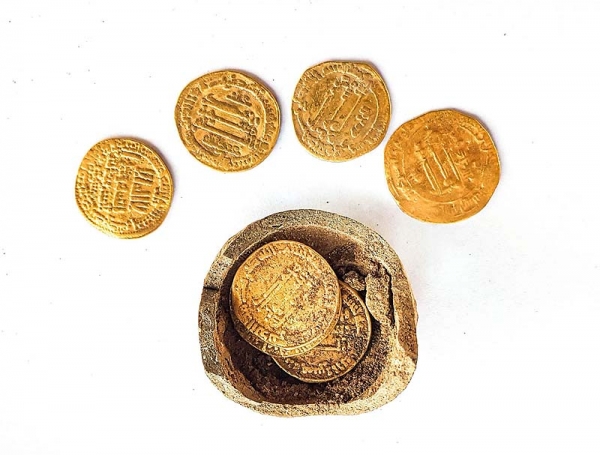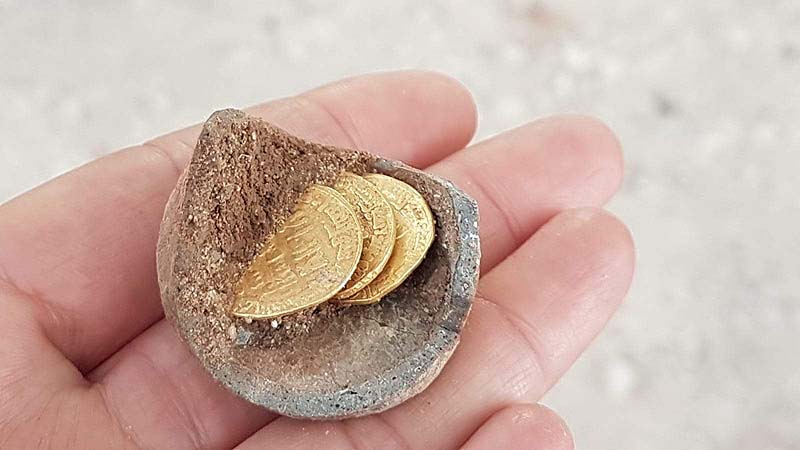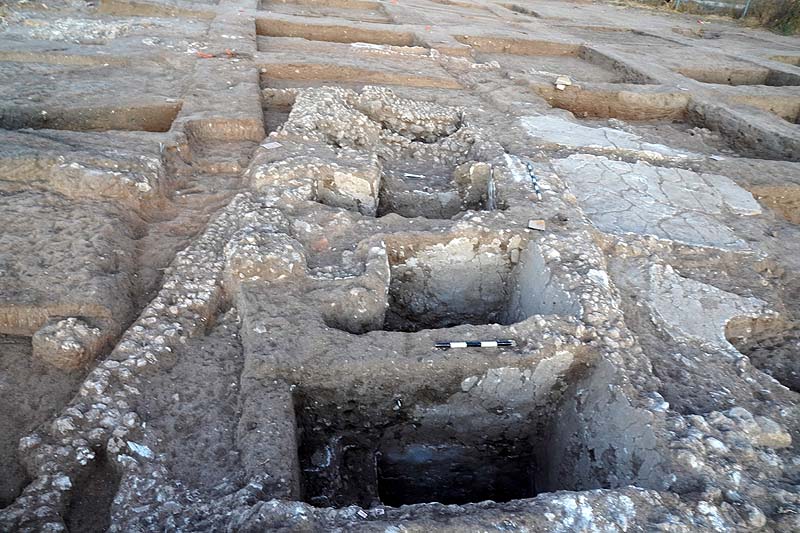
By Itzhak Rabihiya
1,200-Year Old Cruse Loaded with Gold Coins Found in Yavneh Excavation
A stash of Chanukah Gelt was found last week during archaeological excavations in Yavneh conducted by the Israel Antiquities Authority ahead of the development of a new neighborhood by the Israel Lands Authority.
The archaeologists were surprised to discover a broken clay cruse containing gold coins dating to the early Islamic period. The excavations revealed an ancient industrial area which was active for several hundred years, and the archaeologists suggest that the treasure may have been a potter’s personal piggy bank.

“I was in the middle of cataloging a large number of artifacts we found during the excavations, when all of a sudden I heard cries of joy,” said Liat Nadav-Ziv, co-director alongside Dr. Elie Haddad of the excavation on behalf of the IAA. “I ran towards the shouting and saw Marc Molkondov, a veteran IAA archaeologist approaching me excitedly. We quickly followed him to the field where we were surprised at the sight of the treasure. This is without a doubt a unique and exciting find especially during the Chanukah holiday.”
Inspection of the Yavneh gold coins conducted by Dr. Robert Kool, an expert on ancient coins at the IAA, dated the coins to the early Abbasid period (9th century CE). Among the coins is a gold dinar from the reign of the Caliph Haroun Al Rashid (786-809 CE) of “Arabian Nights” fame.
“The hoard also includes coins that are rarely found in Israel,” said Dr. Kool. “These are gold dinars issued by the Aghlabid dynasty that ruled in North Africa, in the region of modern Tunisia, on behalf of the Abbasid Caliphate centered in Baghdad. Without a doubt, this was a wonderful Chanukah present.”
The large-scale excavation, carried out southeast of Tell Yavneh, has revealed a massive number of pottery kilns that were active at the end of the Byzantine and beginning of the early Islamic period (7th – 9th centuries CE). The kilns were used for commercial production of storage jars, cooking pots and bowls. The gold hoard was found inside a small cruse, near the entrance to one of the kilns and, according to the archaeologists, could have been a potter’s personal savings.

The remains of a large industrial installation dated to the Persian period (4th – 5th centuries BCE) were revealed in a different area of the site, which produced wine. According to Dr. Haddad, “initial analysis of the contents of that installation revealed ancient grape pips (seeds). The size and number of vats found at the site indicate that wine was produced there on a commercial scale, well beyond the local needs of Yavneh’s ancient inhabitants.”

